A Day in Portua: Conversations on Marine Crafts
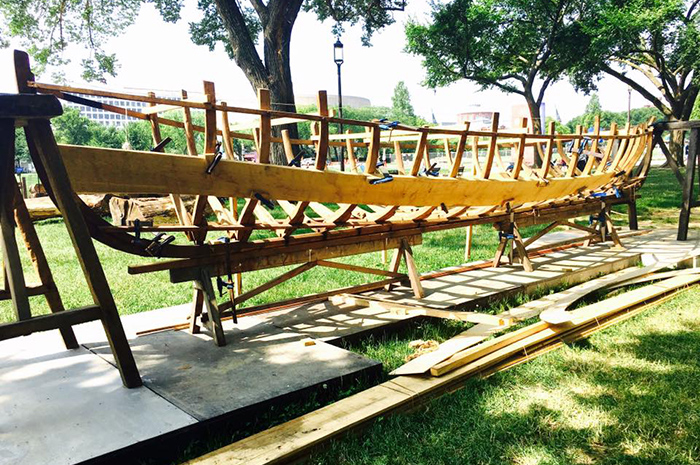
The western edge of the Basque: Innovation by Culture program at the 2016 Folklife Festival took visitors straight into Portua, or “the port.” The area was marked by two large boats—the wooden skeleton of a whaling txalupa and a state-of-the-art carbon fiber racing trainer—as well as striking images of Basque port and sea life. Throughout the Festival, crowds constantly gathered to watch net mending and demonstrations of various tools used in boat building both historically and today.
Fellows Robin Morey and Arielle Akines, part of the Smithsonian Latino Studies Program, spent a day in Portua. Below are their reflections and observations of these interactions.
Marine Crafts: Tradition, Innovation, and Cultural Conversation
By Robin Morey
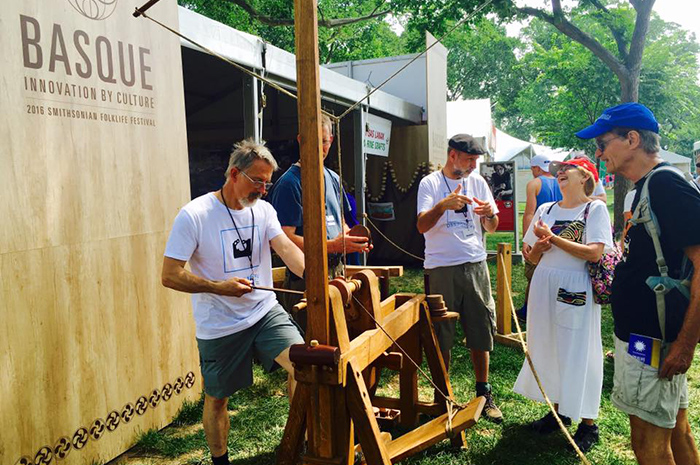
The Basque people take great pride in their seafaring heritage. Among the first stories I heard at the Festival was the history of the whaling ship the San Juan. Built in Gipuzkoa in 1565, the ship spent about two years sailing in the North Atlantic before sinking off the coast of Canada.
Since its rediscovery in the late 1970s, the San Juan has offered marine archaeologists a unique glimpse into Basque sailing culture of the sixteenth century, and it was recently declared a UNESCO Underwater World Heritage site. The craftsmen in the Basque program were excited to tell us about the San Juan, not only because of its significance to Basque history, but because of its renewed significance today.
The city of Donostia-San Sebastian in Basque country was named the 2016 European Capital of Culture. As part of the celebration, shipbuilders are constructing a full-scale replica of the original San Juan, and craftsmen from the Albaola Sea Factory have been heavily involved in the project. At the Folklife Festival, they recreated a smaller fishing vessel as part of their itsas lanak (marine crafts) demonstrations. They used traditional hand tools such as chisels and a foot-powered lathe to construct pieces for the ship.
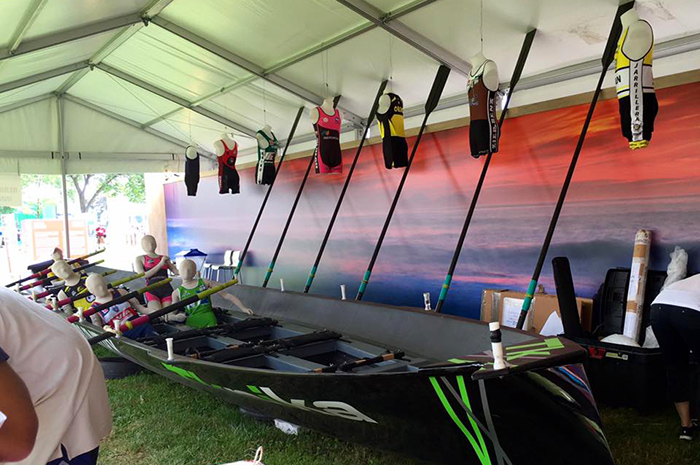
Just a few feet away in the Tknika tent, Miren Canellada worked on building a model of a modern Basque racing boat. She explained that sailing is still very much a part of Basque culture, even though the technologies have changed. She demonstrated the use of carbon fiber and a special resin to create a boat that is stronger than steel, yet many times lighter.
Visitors of all backgrounds and ages came to explore the Marine Crafts tent, and the children especially enjoyed experimenting with the traditional equipment. I listened to men have prolonged conversations with the Basque participants about their tools, woodworking, and sailing. A woman who identified as Acadian spoke at length with the Basque participant about the differences and similarities between Basque and Acadian boat making.
In this way, the general interests of Festival participants and visitors—whether carpentry, sailing, or fishing—provided the point of entry for conversation and cultural exchange and the possibility of facilitating mutual understanding.
Beyond Words: Crafting and Communicating Cultural Pride
By Arielle Akines
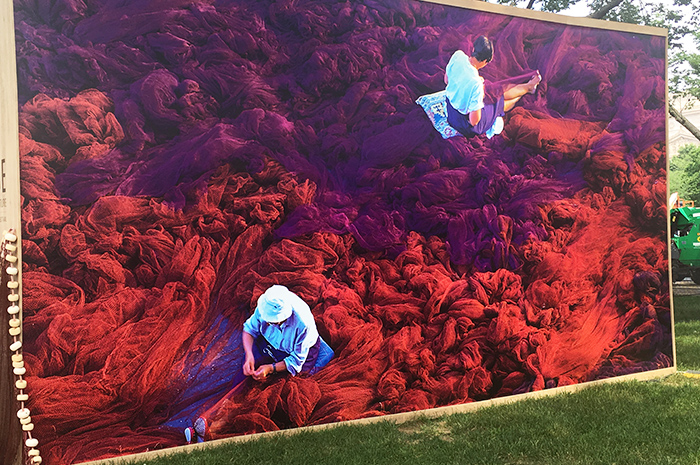
Maria Elena Garate Astralaga, a native of Bermeo, Bizkaia, is a marine net crafter. The net is a practical tool used to catch fish, a staple part of the Basque diet. It is also symbolically important, providing a direct connection for the Basque people to their seafaring heritage. Maria Elena weaves nets for hours a day and takes pride in what she contributes to her community.
I spent a day with Maria Elena and observed how she demonstrated the process of crafting a traditional fishing net and how she shared her knowledge with visitors. Her work area, the Marine Crafts tent, brought the accompanying graphic imagery to life. A large photo mural of two women weavers atop a cloud of nets was the backdrop to Maria Elena’s demonstrations. But it was through her repetitive movements, her welcoming spirit, and her obvious pride in craft that the beauty in the colored nets was transmitted.
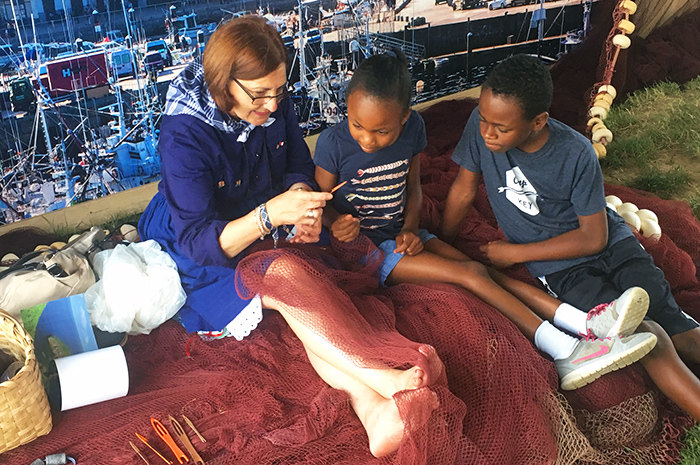
During my time with Maria Elena, I watched one particularly memorable moment of cultural exchange between her and two African American children. She invited them to try the net weaving by sitting on her lap while she guided their hands. She spoke to the children in Spanish, and they only spoke English. In spite of these language barriers and cultural differences, they were able to communicate by sharing this cultural activity.
This was my greatest takeaway from my time in the Basque: Innovation by Culture program: culture is not only transmitted and shared verbally but more importantly through our experiences and interactions.
Robin Morey and Arielle Akines are fellows in the 2016 Smithsonian Latino Museum Studies Program. Morey is a master’s student in anthropology at Columbia University. Akines is a doctoral fellow in Spanish linguistics at the University of Houston and a lecturer in Spanish at Texas Southern University.

